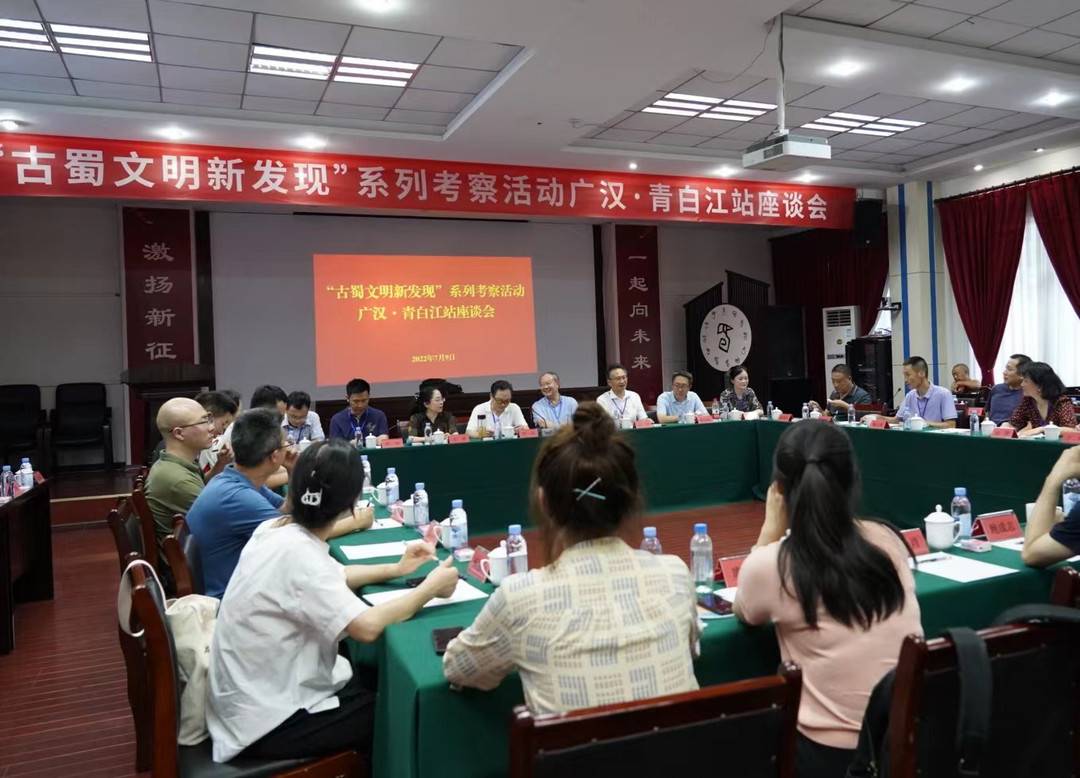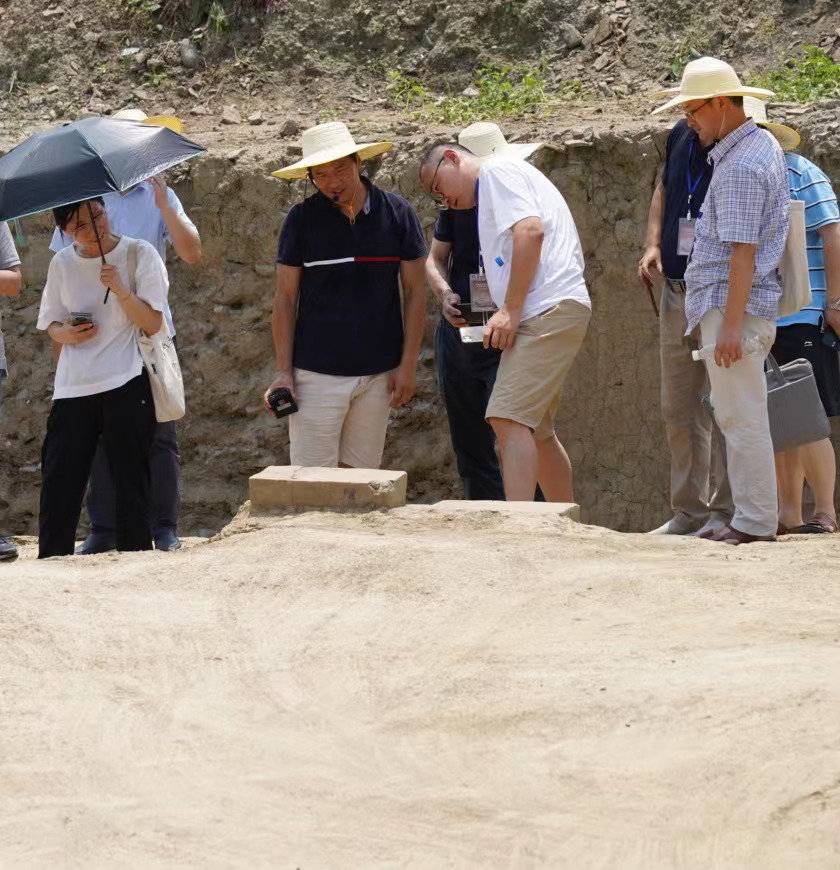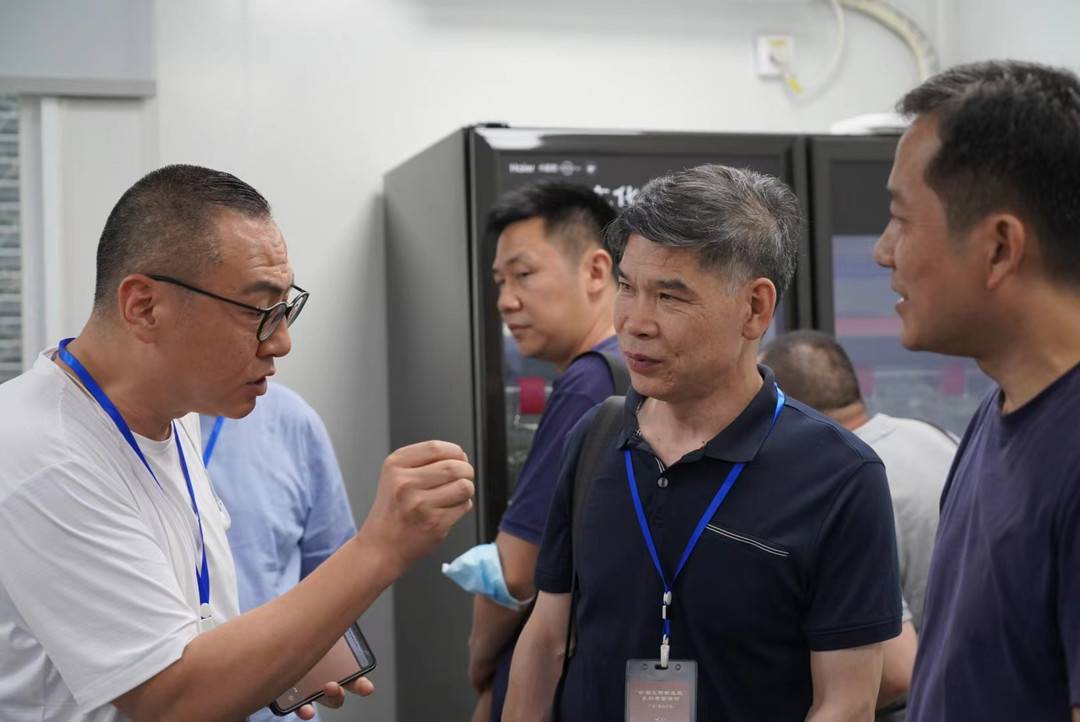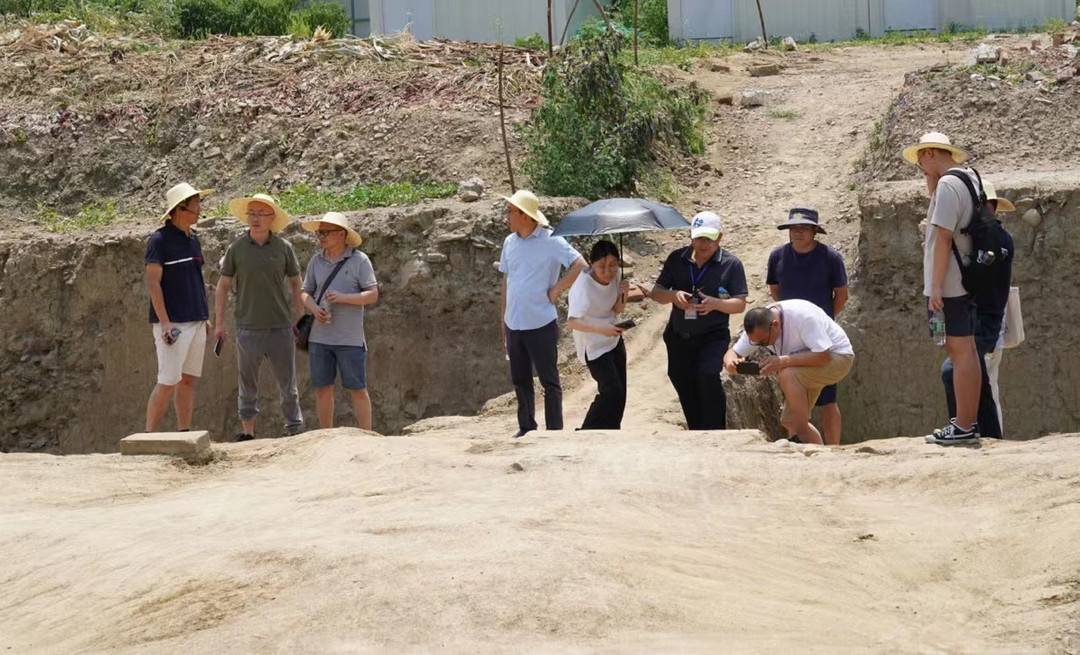Later
Author:Cover news Time:2022.07.09
Around 3700 years, when Liangzhu civilization mysteriously disappeared in the lower reaches of the Yangtze River, the ancient Shu civilization in the upper reaches of the Yangtze River entered a peak period of prosperity.
The mysterious Sanxingdui is known as "one of the greatest archeological discoveries of human beings in the 20th century". Furious.
On July 9th, the second stop of the "Ancient Shu Civilization" series of inspections entered the archeological site of Sanxingdui, the "New Metropolis" site of the Han Dynasty in Chengxiang Town, Qingbaijiang District, from more than 30 universities and research institutes from Sichuan University, Southwest University for Nationalities Famous experts and scholars, visited the latest cultural relics unearthed in Samsung Dou, learned about the brightness of the ancient Shu Kingdom in the Bronze Age and the prosperity of the Han Dynasty Chengdu.
Next, the event will continue. Experts and scholars will inspect the archeological site of the Tomb of the Magnan Warring States Period of the Malaysia Family, and the archeological site of the Zhuwa Street site in Pengzhou.

Symposium site
Walk into the archeological site of Sanxingdui to witness the highly developed ancient Shu civilization
On the morning of the same day, Tang Fei, dean of the Sichuan Provincial Institute of Cultural Relics and Archeology, led experts and scholars to enter the archeological scene of Sanxingdui.
Xin Zhonghua, the deputy director of the Sanxingdui Research Institute of Sichuan Provincial Institute of Cultural Relics and Archeology, explained on -site. Experts entered the archeological greenhouse of Samsung Dou's sacrifice area with an area of 2,000 square meters. Samsung Dou 7 and 8 pits are on excavation.

Experts and scholars visit the site of the "New Metropolis" in the Han Dynasty
"As of June this year, the Sanxingdui site six newly discovered sacrifice pits are currently unearthed in a total of nearly 13,000 cultural relics." Dean Tang Fei introduced that after refined cleaning and reversible physical solid, the previous 3rd to 6 " A number of "heavyweights" cultural relics such as the big mouth, Yuankou Fangzun, Dingzun, Kneeling, Kneeling Portrait, Kneeling Portrait, Kneeling Portrait, Golden Mask, etc. out. Up to now, 77 bronze wares, 120 jade artifacts, 44 pieces of gold, 678 (sections) ivory, 46 ivory carving residues have been initially cleaned up and entered the finishing stage.
The eight sacrifice pits found in Sanxingdui. In the late Shang Dynasty, a large number of bronze wares were unearthed from eight sacrifice pits. These bronze wares indicate that not only the middle and lower reaches of the Yellow River have entered a highly developed bronze era, but also the upper reaches of the Yangtze River also entered a high level. The developed bronze era.
Accompanied by Tang Fei, the experts also went to the open repair hall in the Sanxingdui Museum. The newly unearthed bronze cultural relics are placed here, and some are being protected by cultural relics.
In the cultural relics library, experts and scholars saw the newly unearthed Top Snake Bronze Portrait of the No. 8 Pit of Sanxingdui No. 8 Pit, which are known as K8. The entire cultural relics are divided into three parts. The bronze portrait of the horns of the horns, its hands are supported on a bronze cricket with a square seat, and there is a cinnabar paintings on the head. The latest bronze altar is the most complicated utensils of the K8 process. The bronze altar is from low to high scores. The bottom is a platform base with hollow pattern. A person, there is a group of tall "Lux" sitting on a small base with a decorated, and holding a little beast together. The little beast was also riding a skirt on his back. The little god's neck was tied up by the rope made of three copper wires, and a small copper ring was buckled on the rope.

Experts visit the room in Sanxingdui Wenbao
In the afternoon, experts and scholars walked into the "New Metropolis" site under the leadership of Yan Jinsong, Dean of the Chengdu Cultural Relics and Archeology Research Institute. Experts embarked on the wall of the Han Dynasty and discovered the person in charge of the scene Yang Yang introduced the excavation of the site and the site of the site in detail. While the experts and scholars approached the history of the Han Dynasty, they also realized the hardships and difficulties of archaeologists in the hot summer weather.
Experts praise: Ancient Shu bronze civilization is unique
Professor He Yimin, the director of the Sichuan University Urban Research Institute, the president of the Chengdu History Society, and the chairman of the Chengdu Ancient Capital Society, believes that after the visit, the newly unearted bronze utensils of Samsung Dedi have the characteristics of large number, large volume, complex manufacturing process, exquisite shapes and other characteristics. Essence "Although the Sichuan Basin is inconvenient to traffic, the closed geographical closure has contributed to the open and inclusiveness of the ancient Shu civilization, innovation and creation. A large number of new bronze wares unearthed in Samsung Dou showed that more than 3,000 years ago, the bronze civilizations in the upper reaches of the Yangtze River and the middle and lower reaches of the Yellow River were all capitals. Develop to a peak. "
Professor Wang Ping, vice president of the Party School of the Chengdu Municipal Party Committee of the Communist Party of China, said: "The ancient city of Baodun, which we visited in the last stop, was the origin of the ancient Shu civilization. During the Sanxingdui period, a strong ancient Shu kingdom had stood in the southwest. Capital. Sanxingdui sites have rammed soil walls, sacrifice areas, large buildings and residential areas. The urban functional partitions are clear, the urban form is complete, and it has strong planning. These have fully indicated that the ancient Shu civilization has entered a mature development period.

Experts and scholars visit the site of the "New Metropolis" in the Han Dynasty
"During the Sanxingdui period, the national form of the ancient Shu Kingdom had reached its peak, forming a highly developed civilization center with several major civilization centers in the world at that time. When other ancient culture gradually declined and disappeared, the ancient Shu civilization continued to continue Go down. "Bao Chengzhi, deputy dean of the School of History and Culture of Sichuan University, believes that the Sands site is the continuation of Sanxingdui culture. In 2001, the Jinsha site was discovered in Chengdu. Bronze standing people, golden masks, sun god birds ... Sands are very similar to Sanxingdui. Experts and scholars visit the excavation area of Sanxingdui site

"From Baodun Culture to Sanxingdui Culture to Twelve Bridge Culture, although the kingship has appeared and the country has evolved, the ancient Shu civilization has continued to develop for more than 2,000 years. This is not only in the history of Chinese civilization, but also a special special in the history of world civilization. Case. "He Yimin said. After Qin and Bashu, the ancient Shu civilization did not disappear. Instead, in the process of meeting, exchanges, and blending with the Central Plains civilization, a new regional cultural system was formed, and it continued to spread. The endlessness of the ancient Shu civilization continued.
Cover reporter Dai Zhuxin intern Su Xueqing
Picture according to Sichuan University Urban Research Institute
[If you have news clues, please report to us. Report WeChat Follow: IHXDSB, Report QQ: 3386405712]
- END -
"Flow" becomes "reserved", so let the "first shop" become "stubborn"

The first store economy has stimulated the differentiation of urban consumption, p...
Guigang Meteorological Observatory update the yellow warning signal [III level/heavier]
Guigang Meteorological Observatory on June 10, 2022 Update and released the yellow warning signal of heavy rain yellow: in the past three hours, rainfall has appeared above 40 millimeters in the city,